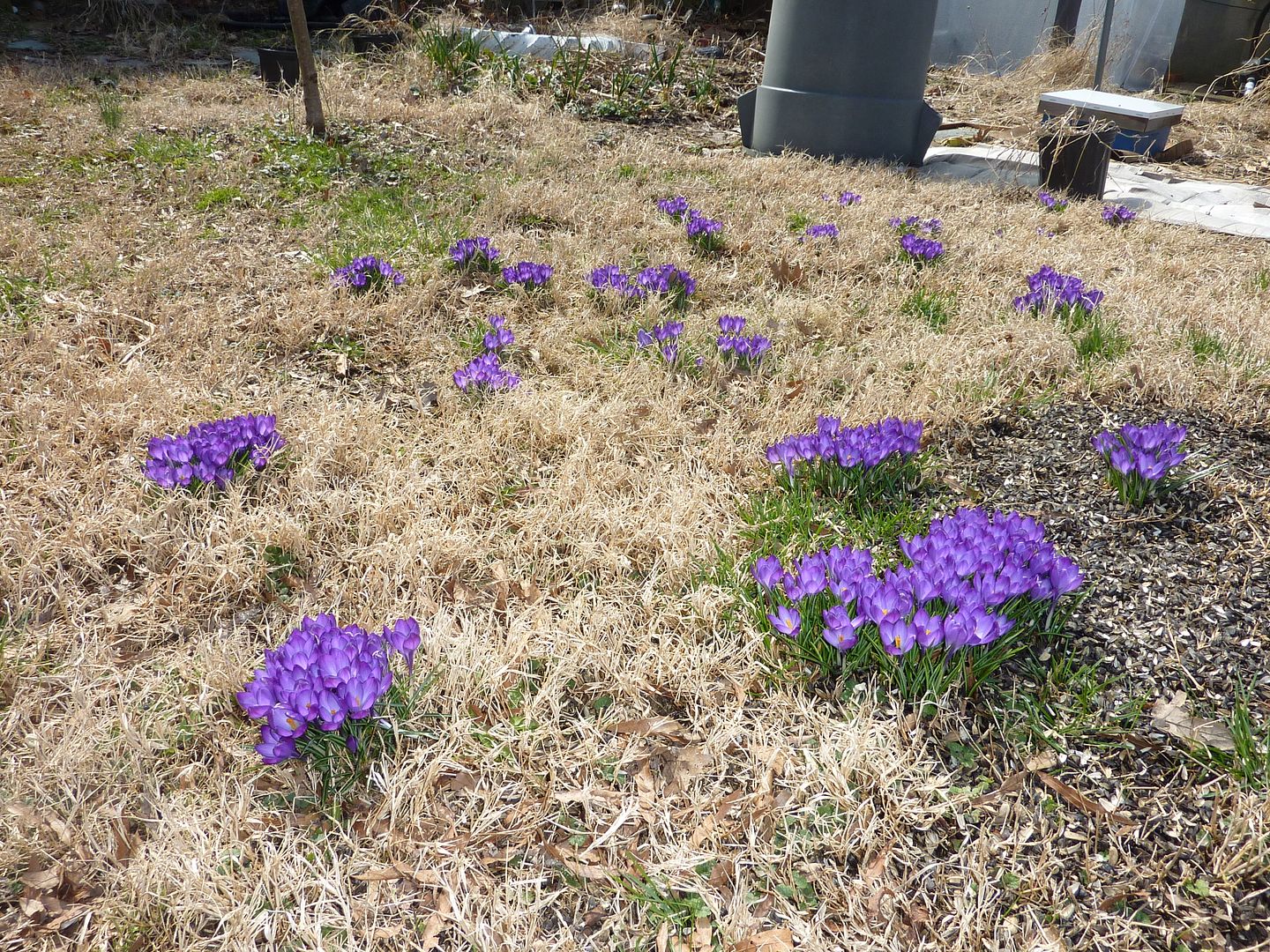Ants have started mating already for the year as demonstrated in the most recent Ant Chat episode. I regret not using the words "gang rape" and "orgy" more in it. Oh well there's always next year for that species.
Temperatures are warming up, but the tree line has yet to fill in. This means it's time to keep an eye out spring blooming ephemerals. These are all plants that take advantage of the full sun during the spring time but typically can't handle a full sun settings in the heat of summer.
Crocuses are among the first to join the action.
These are not native, but they're just to pretty for me to pass up. As a beekeeper I'm always looking to fill in some gaps wherever possible with as many angiosperms as possible. The more native the better but this late winter, early spring time is tricky.
I'm tempted to add yellow flowering dwarf narcissus to the patches here for some added color contrast, as they bloom the same time as the purple crocuses. But as far as I know the Daffodil like plants such as narcissus are not very popular with the pollinators. I'd say of all the spring bulbs Honey Bees only go for Crocuses, Grape Hyacinth, and Snow Drops. I have never seen them on anything else!
This is actually the first year I've seen my honey bees work the purple patch of Crocuses. Normally they go for the yellow and white flowering Crocuses that bloom several weeks sooner and go to the flowering trees from there. The weather has been a little off though so the trees might not be in full swing yet. Hazel Nut was also blooming but has since finished.
The only real native ephemeral that is blooming now is Skunk Cabbage but that demands moist soil year round and that's not what Crocuses like at all. I've also noticed some Speedwell blooming (the creeping kind), but I don't think it's a plant to many bees go for. The sad fact is that several nonnatives actually help fill the blooming gap here. Crocuses, Dandelion, and Creeping Charlie (annoying as some of them) are almost worthy of being called important nectar sources for bee populations. Honey Bees are probably benefiting the most but I've seen lots of bumblebees out pollinating these plants as well. I'm strained to think of or find anything native blooming at this time that I haven't already mentioned.
As a beekeeper I'm stuck with this conflicting view point of providing nectar sources for my bees but doing it in an environmentally friendly way. I've actually introduced Pasque Flower seedlings as yet another alternative. However, because they're not native to New Jersey I might as well have planted more Crocuses. Somehow it feels like slightly less a gardening sin though because Pasque flowers are at least native to North America. This is just another one of those confusing issues I don't think there is a perfect answer for.





